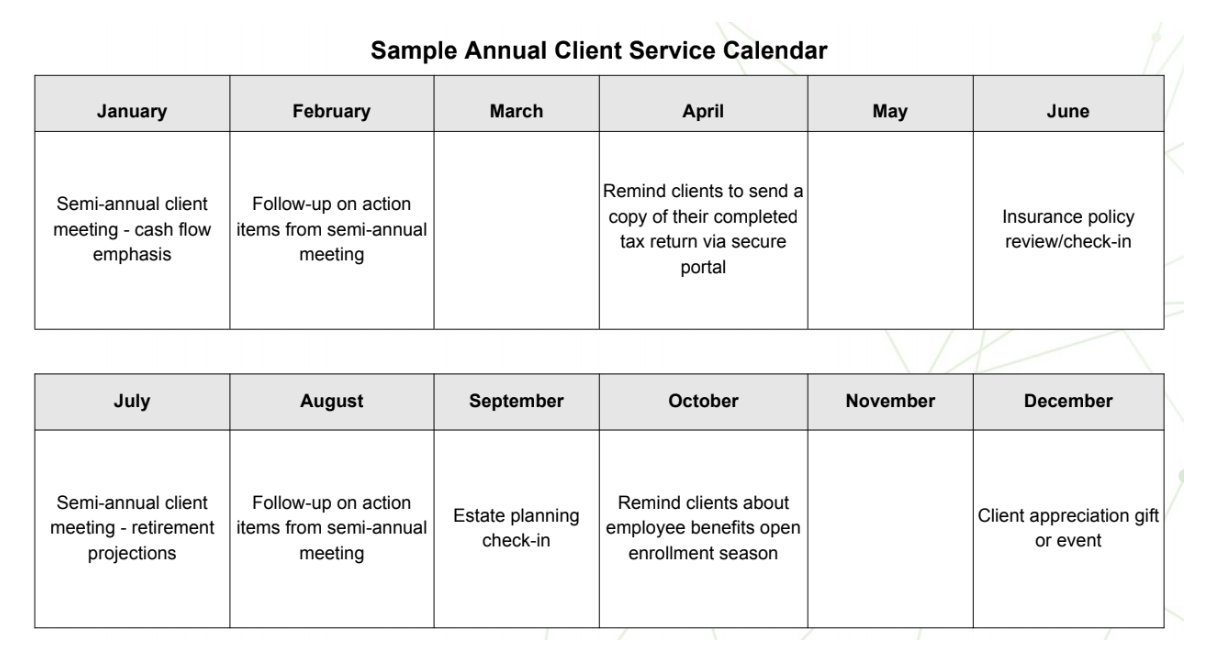Whether serving younger generations through the fee-for-service model is your core business or you’re diving in for the first time, you’ve likely noticed a shift in the industry to include this model as a growing part of financial practices. As this shift picks up speed and younger generations seek financial advice, it’s important to remember that transparency is key to your fee-for-service business model - and this includes transparency from the services you’ll provide to the fees you’ll charge.
In the internet age, everything is just a search away. Industry standards that were once the sole knowledge of those employed can now be accessed by any potential client. They’re not looking for someone to simply manage their assets anymore— they’re seeking a partner to help guide them through their every day financial lives. For younger generations, this includes:
- Paying down student and/or consumer debt
- Creating a budget and monitoring cash flow
- Combining finances for newlyweds
- Planning for education costs
- Assisting with illiquid retirement accounts
The fee-for-service model lets the advice become front and center to your relationship with your clients, but it can sometimes feel like a hurdle when it comes to showing the value you provide in exchange for an ongoing fee. So how can you effectively communicate that message?
1. LAY OUT THE PROCESS
It can be daunting to meet with a financial planner, especially for clients who are just beginning this part of their financial journey and have likely never met with a financial planner before. A brief email introduction with what to expect at the initial meeting can go a long way to ease nerves and create a more inviting atmosphere for potential clients. If they seem like a good fit to continue the process, let them know your process for becoming a client, onboarding, and what you’ll be discussing in the upcoming meetings.This way, you’re both on the same page and they’re not surprised along the way.

2. PROVIDE THEM WITH ACTIONABLE TASKS
Chances are your clients are just as invested in their financial goals as you are (and if they’re not, they may not be the best fit for your practice). But when they wrap up a meeting with you, they go back to their busy day-to-day lives and their other competing priorities. Make it simple for them by laying out what steps they’re responsible for, whether it be gathering statements for you to analyze or changing the due dates on their monthly bills. Make it clear what steps they need to take.
3. ENSURE YOUR FEE IS UNDERSTANDABLE
There are several ways advisors can determine their fee-for-service cost. Many advisors find it helpful to explain the cost as an annual fee paid monthly. This sets the expectation that while you may not be meeting every month, you are maintaining their plan on an annual basis and are there to answer their questions and provide advice when the need arises. AdvicePay’s new fee calculator helps breakdown the cost in an understandable way for your clients and is a great resource to help determine your fees.
4. BE THEIR PARTNER
Most clients are looking for a partner, not someone to make every single decision every single time. Have deep conversations about what being in good financial standing will mean for them, their family, and their future. You can show them their plan is as unique as their situation by relating your advice back to their goals and priorities
If you can be transparent and help your clients understand the value you bring to their lives, they are willing to pay for a trustworthy financial partner, helping guide them to the best decisions for themselves and their families.
Ready to try AdvicePay?
Sign up for a free 14-day trial of AdvicePay.
Comments (4)